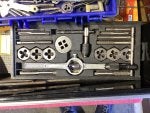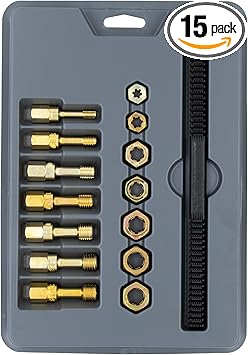Let’s not forget these are JIS screws and that’s how Phillips screwdrivers strip them so quickly
i just did a pad change on mine, found the OEM Honda pads were used last service by the original owner, man I love a single owner old car. Anyway, I didnt pull the rotors just yet, I will of course be doing the brakes again in the future, thats when I will rip it all out and replace rubber supply lines, fully inspect the calipers as well as replenish all the brake parts. I’d caution you to mark the upper and lower pad retention springs, Honda wants me to beleive by making a separate part number for upper and lower, that they are different! I’ve done many a brake job on many cars and such and had not seen any difference in what I took off, but I couldve gotten a high dosage of brake cleaner in my eye too.
i also have the permatex copper color antiseize, used a decent amount of it on the wheel mount surface to the hub so the Houston rust won’t make it hard to get the wheel off in the future. Found the caliper slides a bit gunky, so they too got the yellow slider grease aka SIL-GLYDE brake lubricant which I’ve done a few brake jobs with and still have a good amount left in the toothpaste sized tube, so another good buy
honda does sell EACH rubber piece for the front calipers in case you feel it’s time they are changed, boots and slide o rings like any rubber can disintegrate or degrade over time, mine were good this time around, I’ll stock up on them for the full refresh I will do in the future
that pesky screw for the rotor is an assembly line thing if memory serves
the last thing I’d mention is a proper METRIC tap and die set, I’ve had to recently add to my ancient set in order to have both common pitch threads, but it’s worth it as I tend to trace and chase threads when I’m taking things apart to ensure they don’t crust up worse than they already are when I pull them apart. On a recent power steering hose replacement, I found one of the two pump bolts to be on the verge of rust and corrosion that could’ve paid me back by snapping off inside the pump😱😱😱
I chase the threads on both those bolts and feel I can sleep better at night🤣🤣












